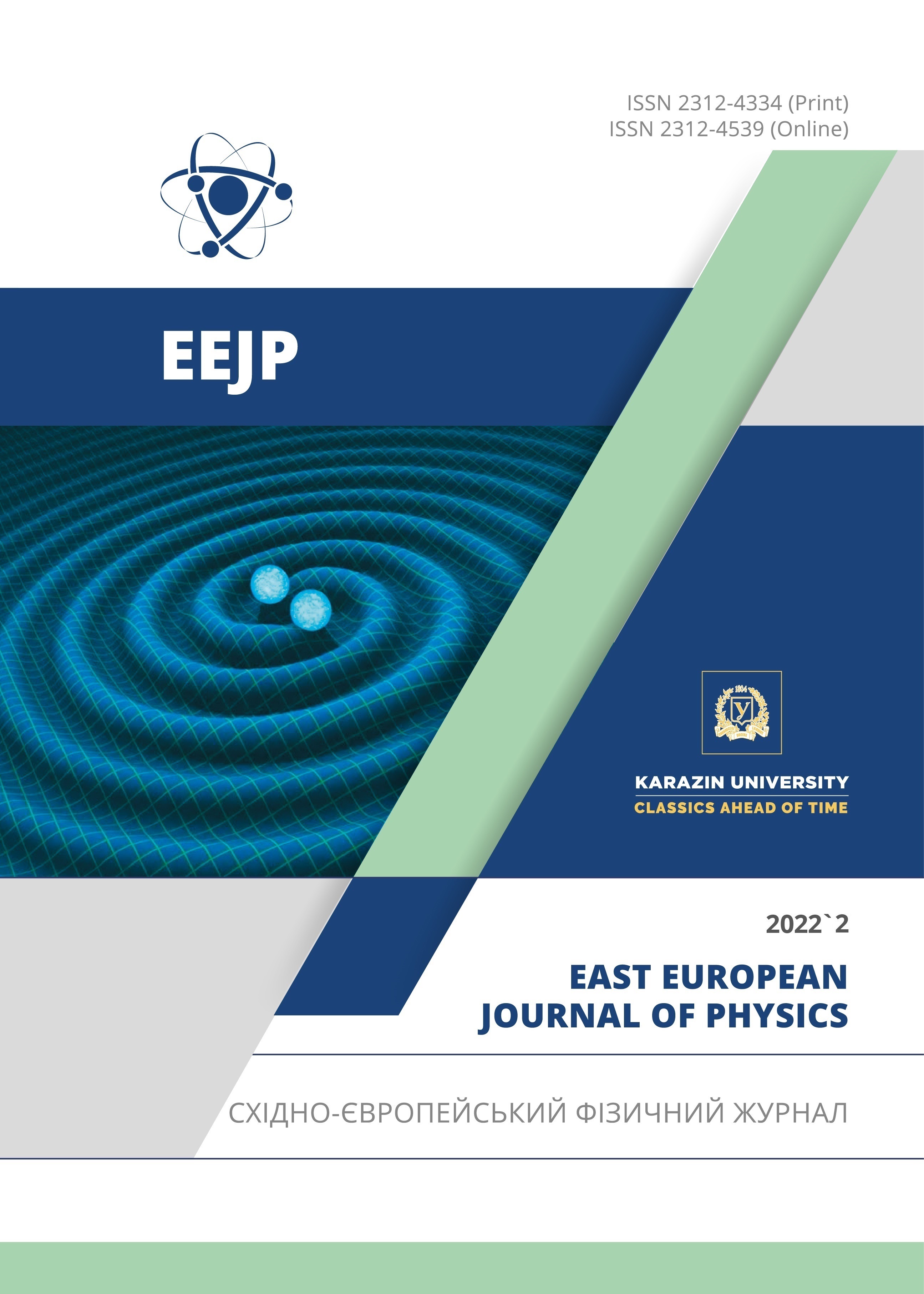Boron Isotopic Ratio (δ11B) Measurements in Boron Carbide (B4C): Benchmarking Between SF-ICP-MS and PIGE Techniques
Abstract
The results of comparing the analytical capabilities of Sector Field Inductively Coupled Plasma Mass Spectrometry (SF-ICP-MS) and Particle Induced Gamma-ray Emission (PIGE) methods for determining the 11B/10B isotope ratio in boron carbide samples (B4C) are presented. The following nuclear reactions excited by protons on the stable boron isotopes are considered: 10B(p,aγ)7Be, 10B(p,pγ)7Be and 11B(p,γ)12C. The optimum proton energy range was determined to be within 550 to 600 keV, while the energies of the induced gamma-radiation that can be used for quantitative estimation of the boron isotopes were 429 keV and 4439 keV for the isotopes 10B and 11B, respectively. Considering the uncertainties of measurements, the data for the 11B/10B isotope ratios, measured by the SF‑ICP‑MS and PIGE methods, are found to correlate with each other; yet they are characterized by a systematic bias. The uncertainty of measurements by the PIGE method was somewhat higher in comparison with SF-ICP-MS, and ranged from ± 4.1 % to ± 4.3 %, and from ± 1.1 % to ± 3.5 %, respectively.
Downloads
References
C. Voster, L. Greef, and P. Coetzee, S. Afr. J. Chem. 63, 207 (2010), http://www.scielo.org.za/scielo.php?script=sci_arttext&pid=S0379-43502010000100033&lng=en&nrm=iso
K. Tirez, W. Brusteen, D. Widory, E. Petelet, A. Bregnot, D. Xue, P. Boeckx, and J. Bronders, J. Anal. At. Spectrom. 25, 964 (2010), https://doi.org/10.1039/C001840F
I. Takasaki, T. Nagumo, T. Inaba, N. Yoshino, and T. Maruyama, J. Nucl. Sci. Technol. 49(8), 867 (2012), https://doi.org/10.1080/00223131.2012.703946
Nuclear Data Center, Japan Atomic Energy Agency. Boron Cross Sections. https://wwwndc.jaea.go.jp/cgi-bin/Tab80WWW.cgi?lib=J40&iso=B010.
J.S. Becker, J. Anal. At. Spectrom. 17, 1172 (2002), https://doi.org/10.1039/B203028B
J. Aggarwal, F. Böhm, G. Foster, S. Halas, B. Hönisch, S.-Y. Jiang, J. Kosler, et al. J. Anal. At. Spectrom. 24, 825 (2009), https://doi.org/10.1039/B815240C
S. Kasemann, D. Schmidt, J. Bijma, and G. Foster, Chem. Geol. 260(1), 138 (2009), https://doi.org/10.1016/j.chemgeo.2008.12.015
P. Coetzee, and F. Vanhaecke, Anal. Bioanal. Chem. 383, 977 (2005), https://doi.org/10.1007/s00216-005-0093-7
S. Chhillar, R. Acharya, S. Sodaye, and P. Pujari, Anal. Chem. 86(22), 11167 (2014), https://dx.doi.org/10.1021/ac5024292
Y. Sunitha, and S. Kumar, Appl. Radiat. Isot. 128, 28 (2017), https://doi.org/10.1016/j.apradiso.2017.06.037
V. Levenets, O. Omelnyk, A. Shchur, and B. Shirokov, J. Radioanal. Nucl. Chem. 329, 1183 (2021), https://doi.org/10.1007/s10967-021-07873-y
Z. Varga, M. Krachler, A. Nicholl, M. Ernstberger, T. Wiss, M. Wallenius, and K. Mayer, J. Anal. At. Spectrom. 33, 1076 (2018), https://doi.org/10.1039/C8JA00006A
V. Bondarenko, L. Glazunov, A. Goncharov, V. Kolot, V. Kuz'menko, V. Levenets, A. Omel'nik, V. Suhostavec, and V. Shchur, Scientific Bulletin (Belgorod State University), 2(15), 86 (2001).
V. Levenets, A. Shchur, O. Omelnyk, B. Shirokov, Functional Materials. 14(2), 258 (2007), http://functmaterials.org.ua/contents/14-2/fm142-08.pdf
J. Bird, M. Scott, L. Russell, and M. Kenny, Aust. J. Phys. 31, 209 (1978), https://doi.org/10.1071/PH780209
I. Golicheff, M. Loeuillet, and Ch. Engelmann, J. Radioanal. Chem. 12, 233 (1972), https://doi.org/10.1007/BF02520991
Copyright (c) 2022 Dmytro Kutnii, Stanislav Vanzha, Dmytro Burdeynyi, Volodymyr Levenets, O. Omelnik, A. Shchur

This work is licensed under a Creative Commons Attribution 4.0 International License.
Authors who publish with this journal agree to the following terms:
- Authors retain copyright and grant the journal right of first publication with the work simultaneously licensed under a Creative Commons Attribution License that allows others to share the work with an acknowledgment of the work's authorship and initial publication in this journal.
- Authors are able to enter into separate, additional contractual arrangements for the non-exclusive distribution of the journal's published version of the work (e.g., post it to an institutional repository or publish it in a book), with an acknowledgment of its initial publication in this journal.
- Authors are permitted and encouraged to post their work online (e.g., in institutional repositories or on their website) prior to and during the submission process, as it can lead to productive exchanges, as well as earlier and greater citation of published work (See The Effect of Open Access).








